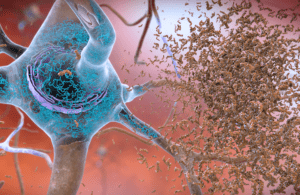
Beta amyloid plaques. [Image courtesy of NIH]
The scientists from Tokyo University of Science (TUS) in Japan and Nazarbayev University in Kazakhstan published the research in ACS Applied Bio Materials.
Noting the amyloid fibrils formed with the self-assembly of denatured proteins are associated with Alzheimer’s disease, the researchers discovered that fluoride nanoparticles could alter the assembly and structure of the amyloid β protein.
Fluoride nanoparticles are used in in vivo imaging, including brain imaging applications.
In particular, the scientists reported the influence of fluoride nanoparticles and surrounding ions on the development of β-sheet structure in amyloid β proteins.
Aberrations in the protein secondary structures or assembly are associated with neurodegenerative diseases, including Alzheimer’s.
The ACS Applied Bio Materials study used a solution of fluoride ceramic (CeF3) nanoparticles to investigate a section of amyloid β peptide.
Using Fourier transform infrared spectroscopy, the scientists discovered that peptides close to the nanoparticle surface were more likely to form β-sheets.
[Image courtesy of Tokyo University of Science]
The research community has remained divided concerning the etiology of Alzheimer’s disease. The consensus view in recent decades is the so-called amyloid hypothesis, which assumes the buildup of amyloid-β is the primary cause of Alzheimer’s disease. However, many drug candidates targeting the peptide have failed to deliver convincing results in Alzheimer’s patients.
Filed Under: Neurological Disease





Tell Us What You Think!
You must be logged in to post a comment.